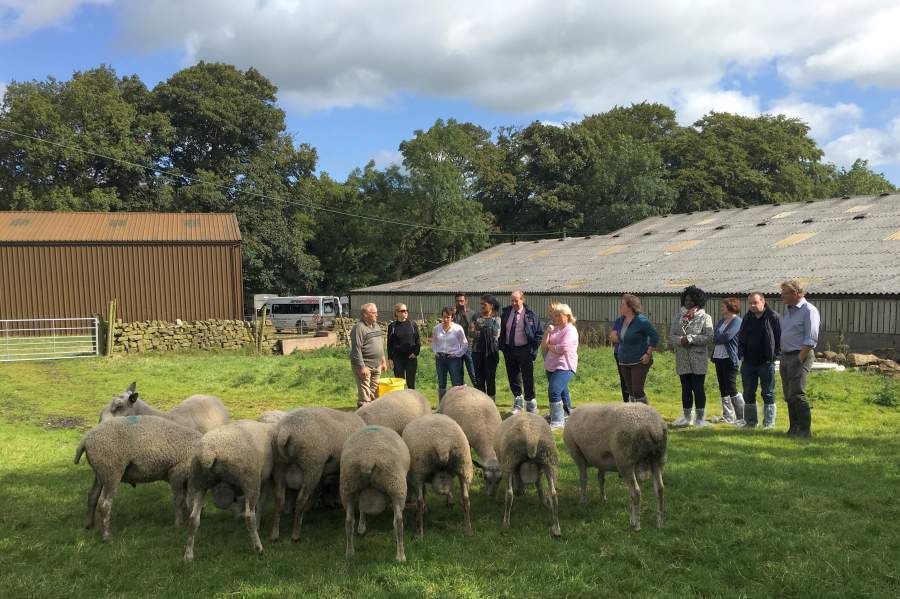
Defra and British Wool have explored how sheep production is a necessity in upland management, calling the practice a "vital role" in looking after the landscape.
British Wool has recently welcomed a group of senior policy leaders from Defra to look at the work carried out by sheep farmers in the UK on upland management.
To explore the role of upland sheep production, the day started with the group visiting Hall Farm, Blubberhouses near Otley, a progressive hill farm, run by British Wool’s regional committee member for West Yorkshire, Nick Houseman.
The event was a chance for government to witness a first-hand perspective on the importance of the sheep industry's role.
The twelve-person delegation saw how Mr Houseman manages his flock of Swaledale, Bluefaced Leicesters and some North of England Mules on his 475 acre farm, which runs to 800ft.
Mr Houseman runs the Swaledale ewes with a Bluefaced Leicester ram to produce the North of England Mule lambs which are then crossed with Texel x Beltex rams to produce prime lambs for meat production.
The aim of this visit was to highlight the fact that upland sheep farming is an "essential" part of the whole sheep industry.
'Unquestionable'
Commenting, British Wool Chairman, Ian Buchanan, said: “These producers not only supply the market with a niche meat product, they also provide breeding stock and genetics to the UK gene pool.
“It is unquestionable that upland farmers like Nick play a vital role in looking after the upland landscape, whether for keystone species, habitats or for recreation, as well as protecting public goods such as water and carbon.”
The uplands are areas where farming activity is constrained by climate, soils and topography.
In the UK, this land is classified as a Less Favoured Area (LFA), with the majority falling into the Severely Disadvantaged category.
This land is commonly utilised for grazing breeding hill sheep and serves a fundamental purpose in the UK’s sheep stratification system.
'Foundation'
The traditional appearance of UK uplands is the product of the work of upland farmers and their livestock.
Aside from breeding stock and genetics, hill and upland sheep breeds manage the landscape and conserve natural habitats, promoting biodiversity.
Sheep can be used to help control bracken and protect heather moorland and other natural habitats.
Additionally, grazing sheep contribute to the improvement of peat soils often found in upland areas. Their hooves break up the cap of peat soils and trample in dead vegetation, and their waste fertilises the soil with rich gut bacteria.
British Wool said in a statement: “Farmers are the foundation of all land management in the country and native breeds possess qualities that are essential to the future of sheep production in the UK.
“The loss of native upland breeds would not only be detrimental to the utilisation and management of the hill landscape, lead to a loss to the culture and heritage of these areas, and change the face of the British countryside for generations.”
